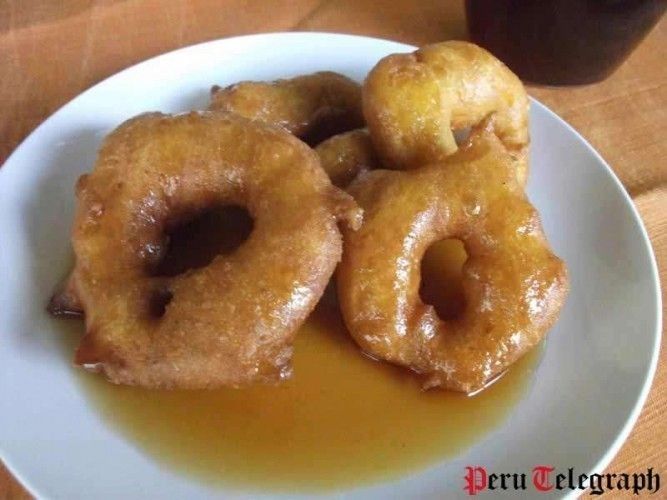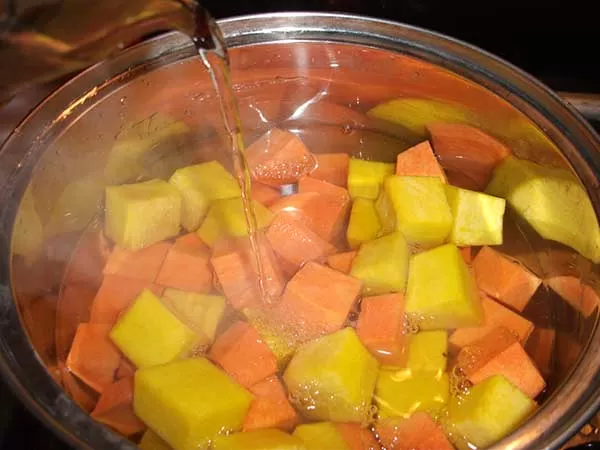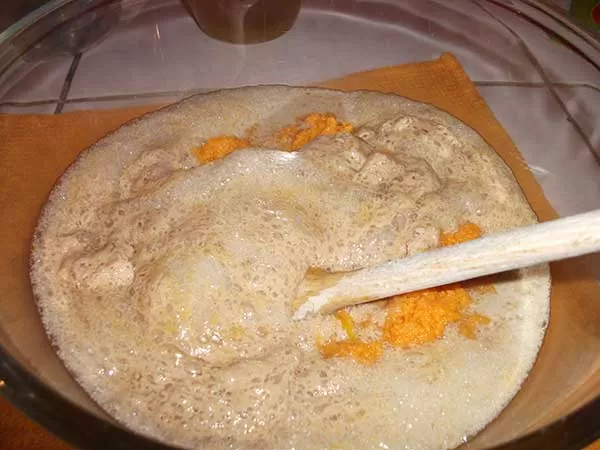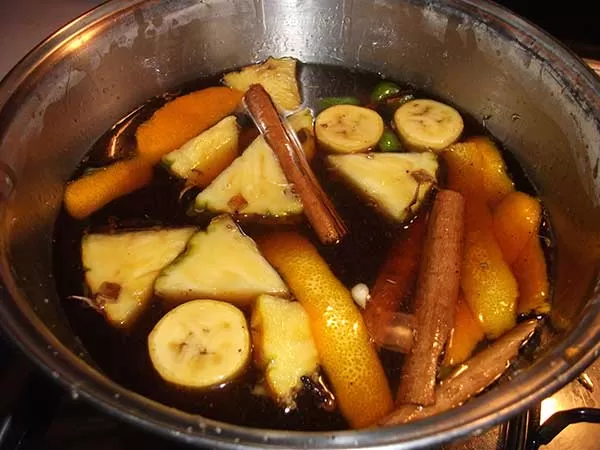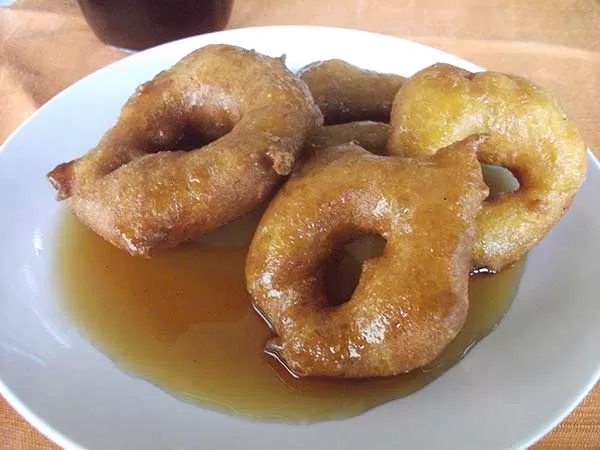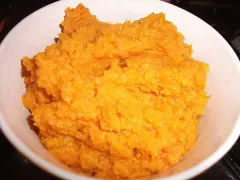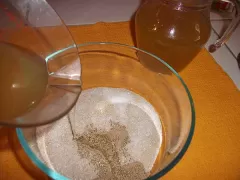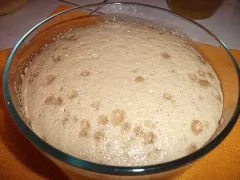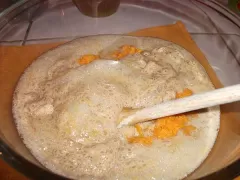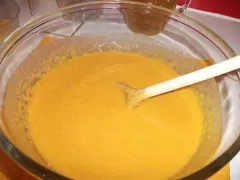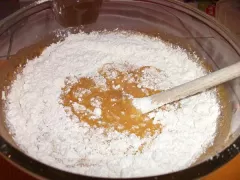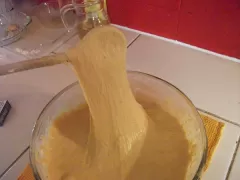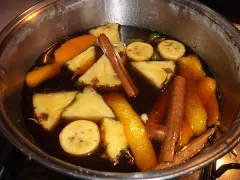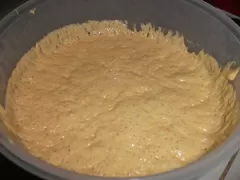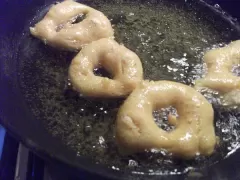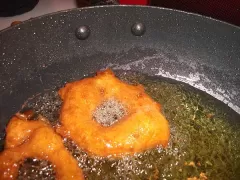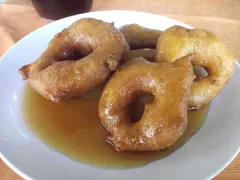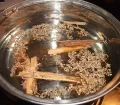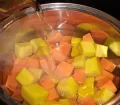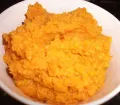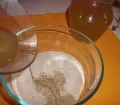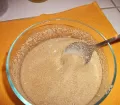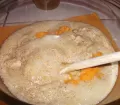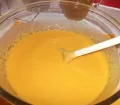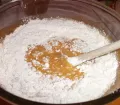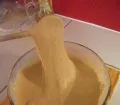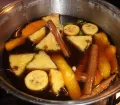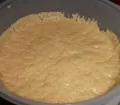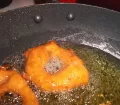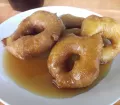Picarones are one of these Peruvian goodies if tried once there’s no way back. The deep fried picarones drizzled with a sweet and flavorful syrup are not only on the list of Peruvian “must eats”, but also absolutely delicious and addicting.
Often just referred to as a Peruvian kind of doughnut, they are actually quite different and so uniquely Peruvian.
When the Spaniards conquered the New World, they not only brought their structures and religions, customs and traditions with them, but also their food. As it sometimes was difficult or even impossible in colonial Peru to get all the ingredients for a special dish from back home, recipes had to be altered or refined with locally available substitutes. And as the cooking and baking was mostly done by locals or African slaves, the flavors and techniques mingled creating new and eventually typical Peruvian dishes.
This applies to picarones as well. It is assumed that picarones derived from the Spanish buñelos. By adding a local squash and sweet potatoes to the usual yeast dough and serving the fritters with a tasty syrup full of spices, African slaves created a sweet, flavorful and delicious treat that in no time went viral in colonial Lima. And as back then, picarones today are still sold by street vendors across the Peruvian capital (and countless restaurants) and other cities and continue to be extremely popular.
If you are far from Peru and craving this traditional Peruvian treat, just prepare it yourself at home. It really isn’t that difficult though time consuming and laborious. And please don’t be put off by the long list of ingredients. Most of them you will have at home anyway or are easy to get in every supermarket; except for the “chancaca syrup” the original recipe asks for.
Chancaca syrup, a sweet sauce made of unrefined whole cane sugar, can usually be found in Latin American food shops, as well online. If you can’t find it, just substitute it with molasses, muscovado syrup or even good quality honey.
And once you taste your homemade, freshly fried, still warm and crispy picarones dipped into the sweet and flavorful syrup, you will know that all the time and effort you put into the preparation was worth every single minute.
LimaEasy's Recipe for Peruvian Picarones
Ingredients for the dough:
- 750 ml (a good 3 cups) water
- 6 cloves
- 2 cinnamon sticks
- 2 tsp anise seeds
- 300 gr (1 1/3 cups) peeled camote amarillo (substitute with sweet potato) cut into cubes
- 300 gr (1 1/3 cups) peeled zapallo macre (substitute with squash or pumpkin) cut into cubes
- 240 ml (1 cup) water from cooking squash and camote
- 70 gr (1/3 cup) sugar
- 3 Tbsp of active dry yeast (instant yeast works fine as well)
- 1 egg
- 1 egg yolk
- pinch of salt
- 500 gr (4 cups) all-purpose flour
- oil for frying
Ingredients for the syrup:
- 300 ml (1 1/4 cups) water
- 200 ml (3/4 cup and 2 Tbsp ) Chancaca syrup or molasses, muscovado syrup or good quality honey
- 200 g (1 cup) brown sugar
- 1 lime
- 1 orange
- 1 small banana
- 100 g (1/2 cup) pineapple
- 1 fig or fig leave (optional)
- 6 cloves
- 2 cinnamon sticks
- 1/2 tsp anise seeds
- pinch of nutmeg
Preparation of the Picarones dough:
- Cooking Squash and Sweet Potatoes: Fill a large pot with the 750 ml (3 cups) water and add 6 cloves, 2 cinnamon sticks and 2 teaspoons of anise seeds. Bring to a boil and let simmer for about 10 minutes. Strain and reserve (!!!) the water. Place the sweet potatoes in a pot, cover generously with the reserved water and cook over medium heat for 10 minutes; then add the squash and continue to cook until both are very soft. Strain and reserve (!!!) the cooking water! Let the cooking water cool until lukewarm. Mash the sweet potatoes and squash and let cool.
- Preparing the Yeast: Combine the 3 tablespoons of yeast with 70 gr (1/3 cup) sugar and dissolve the mixture in 240 ml (1 cup) of the reserved, lukewarm cooking water. Let rest for 15 minutes. The mixture will double or even triple in size, so use a big enough bowl.
- Preparing the dough: In a very large bowl combine the sweet potato-squash puree with 1 egg, 1 egg yolk and a pinch of salt. Then add the yeast mixture and stir together with a wooden spoon. Incorporate the flour very well until you get a smooth and elastic dough (a little bit like the consistency of chewing gum). Traditionally this is done by hand with a wooden spoon and involves about 10 to15 minutes hard work until the dough is soft and stretchy. But you can use a mixer with a dough hook which will get you the same result in a about 5 minutes without too much effort. If the dough is to dry (it should be still just slightly sticky), add a little bit more of the reserved cooking water, if it's too soft and extremely sticky add more flour. Once the dough is smooth and elastic cover it with a wet, warm kitchen towel and let rise in a warm place for at least 2 hours until doubled in size.
Preparation of the Syrup:
- While the dough is resting, there is time to prepare the syrup or honey for the picarones. With an orange or vegetable peeler remove 3 slices of peel from the orange and 2 slices of peel from the lime. Then juice the orange and lime.
- Place 200 ml (a little bit more than ¾ cup) chancaca syrup, molasses, muscovado syrup or honey into a saucepan and add 300 ml (1 ¼ cups) water, 200g (1 cup) brown sugar, the freshly pressed orange and lime juice as well as the zests, 100g (1/2 cup) sliced pineapple, the small banana cut into 3 chunks, the 6 cloves, 2 cinnamon sticks, ½ teaspoon of anise seeds and a pinch of nutmeg. If you have, add a fig leave or a fresh fig. Bring to a boil while stirring until the sugar is dissolved.
- Then let simmer for about 20 to 30 minutes stirring occasionally until the sauce thickens slightly. The Picarones syrup should have the consistency of a thin pancake syrup. Strain and let cool.
Preparation of the Picarones:
- Some advice before starting: When the dough rested enough and at least doubled in size, heat a decent amount of oil in a large sauce pan for frying the picarones. Be aware that the dough is sticky, even if everyone tells you it isn’t. Forming the picarones might look easy, but honestly, especially for beginners, it can get messy. As skill comes with practice, go for it. And while your first picarones might not look perfect (by the way mine never do), they will still taste great.
- Forming and frying the Picarones: So let's get started. To make it easier have a bowl of salted water at hand (just take a cup of water and add 2 teaspoons of salt). Wet both your hands in the salted water and take a good golf ball sized portion of the dough with one hand. Then stretch the dough making a hole in the middle with your thumb(s) to form a ring shaped picaron. Quickly put it in the hot oil and fry from both sides until golden brown. Remove from the oil and drain on a paper towel.
- Repeat the process until all dough is used. You can keep picarones warm in a slightly preheated oven while finishing your task. If you just can't manage to form anything that at least slightly looks like picarones and are about to give up (which really would be a shame after you put so much time and work into it), you can as well fill the dough in a piping bag and pipe rings directly into the heated oil.
- Serve the picarones still warm drizzled with lots of syrup.
- Enjoy the delicious result of your hard work!


